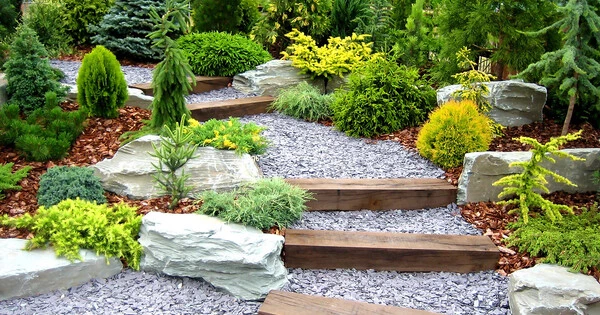Sustainable landscaping is a style of modern gardening or landscaping that considers the environmental concern of sustainability. It is a strategy to planning and maintaining outdoor areas that prioritizes environmental protection and resource efficiency. It is also known as eco-friendly or green landscaping.
It strives to produce beautiful and functional landscapes while limiting negative environmental impacts. According to Loehrlein in 2009, this encompasses residential and commercial garden design, building, and maintenance, as well as organic lawn management and organic gardening practices.
Definition
A sustainable garden is meant to be both visually appealing and in harmony with the local climate and ecosystem, with minimal resource inputs. As a result, the design must be “functional, cost-effective, visually appealing, environmentally friendly, and easily maintainable.”
As part of sustainable development, it prioritizes the preservation of finite resources, the reduction of waste, and the prevention of air, water, and soil contamination. Composting, fertilizing, integrated pest control, planting the correct plant in the right area, proper turf use, and xeriscaping (water-wise gardening) are all components of sustainable landscaping.
Here are some key principles and practices associated with sustainable landscaping:
- Native Plant Selection: Using native plants in landscaping reduces the need for excessive water, fertilizers, and pesticides, as these plants are adapted to the local climate and soil conditions.
- Drought-Tolerant Landscaping: Incorporating drought-resistant plants, like succulents and xerophytes, can reduce water consumption significantly, making landscapes more resilient to water scarcity.
- Soil Health: Healthy soil is essential for sustainable landscaping. Practices such as composting, mulching, and avoiding excessive soil disturbance can improve soil structure, fertility, and water retention.
- Water Efficiency: Implementing efficient irrigation systems, such as drip irrigation and rain sensors, can help minimize water wastage. Rainwater harvesting and greywater reuse are also sustainable water management strategies.
- Reducing Lawn Areas: Traditional lawns require a lot of water and maintenance. Reducing the size of lawns or replacing them with alternative ground covers or hardscape features can conserve resources.
- Wildlife Habitat: Designing landscapes that provide food, shelter, and nesting sites for local wildlife, such as birds and pollinators, supports biodiversity and ecological balance.
- Integrated Pest Management (IPM): Instead of using chemical pesticides, sustainable landscaping relies on IPM techniques, which involve monitoring, prevention, and the use of natural predators to manage pests.
Regular maintenance, such as trimming, weeding, and proper yard waste management, is critical for the long-term health and look of a sustainable landscape. Educating homeowners, landscapers, and communities on the benefits of sustainable landscaping practices can lead to widespread acceptance and support for environmentally friendly landscapes.
Sustainable landscaping benefits the environment while also providing several benefits to property owners, such as lower maintenance costs, increased property value, and a healthier, more pleasurable outdoor space. Individuals and groups can contribute to a more sustainable and environmentally responsible approach to landscaping by using these techniques.
















